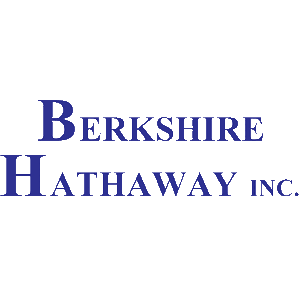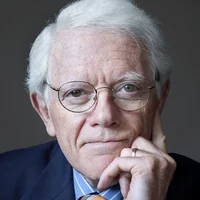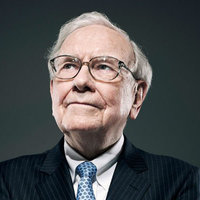
Summit Industrial Income REIT
TSX:SMU.UN

Summit Industrial Income REIT?

| US |

|
Johnson & Johnson
NYSE:JNJ
|
Pharmaceuticals
|
| US |

|
Berkshire Hathaway Inc
NYSE:BRK.A
|
Financial Services
|
| US |

|
Bank of America Corp
NYSE:BAC
|
Banking
|
| US |

|
Mastercard Inc
NYSE:MA
|
Technology
|
| US |

|
UnitedHealth Group Inc
NYSE:UNH
|
Health Care
|
| US |

|
Exxon Mobil Corp
NYSE:XOM
|
Energy
|
| US |

|
Pfizer Inc
NYSE:PFE
|
Pharmaceuticals
|
| US |

|
Palantir Technologies Inc
NYSE:PLTR
|
Technology
|
| US |

|
Nike Inc
NYSE:NKE
|
Textiles, Apparel & Luxury Goods
|
| US |

|
Visa Inc
NYSE:V
|
Technology
|
| CN |

|
Alibaba Group Holding Ltd
NYSE:BABA
|
Retail
|
| US |

|
JPMorgan Chase & Co
NYSE:JPM
|
Banking
|
| US |

|
Coca-Cola Co
NYSE:KO
|
Beverages
|
| US |

|
Walmart Inc
NYSE:WMT
|
Retail
|
| US |

|
Verizon Communications Inc
NYSE:VZ
|
Telecommunication
|
| US |

|
Chevron Corp
NYSE:CVX
|
Energy
|
We'll email you a reminder when the closing price reaches USD.
If you don’t study any companies, you have the same success buying stocks as you do in a poker game if you bet without looking at your cards.

Utilize notes to systematically review your investment decisions. By reflecting on past outcomes, you can discern effective strategies and identify those that underperformed. This continuous feedback loop enables you to adapt and refine your approach, optimizing for future success.
Each note serves as a learning point, offering insights into your decision-making processes. Over time, you'll accumulate a personalized database of knowledge, enhancing your ability to make informed decisions quickly and effectively.
With a comprehensive record of your investment history at your fingertips, you can compare current opportunities against past experiences. This not only bolsters your confidence but also ensures that each decision is grounded in a well-documented rationale.
Do you really want to delete this note?
This action cannot be undone.

| 52 Week Range |
N/A
N/A
|
| Price Target |
|
We'll email you a reminder when the closing price reaches CAD.
Choose the stock you wish to monitor with a price alert.

|
Johnson & Johnson
NYSE:JNJ
|
US |

|
Berkshire Hathaway Inc
NYSE:BRK.A
|
US |

|
Bank of America Corp
NYSE:BAC
|
US |

|
Mastercard Inc
NYSE:MA
|
US |

|
UnitedHealth Group Inc
NYSE:UNH
|
US |

|
Exxon Mobil Corp
NYSE:XOM
|
US |

|
Pfizer Inc
NYSE:PFE
|
US |

|
Palantir Technologies Inc
NYSE:PLTR
|
US |

|
Nike Inc
NYSE:NKE
|
US |

|
Visa Inc
NYSE:V
|
US |

|
Alibaba Group Holding Ltd
NYSE:BABA
|
CN |

|
JPMorgan Chase & Co
NYSE:JPM
|
US |

|
Coca-Cola Co
NYSE:KO
|
US |

|
Walmart Inc
NYSE:WMT
|
US |

|
Verizon Communications Inc
NYSE:VZ
|
US |

|
Chevron Corp
NYSE:CVX
|
US |
This alert will be permanently deleted.


























Good morning, ladies and gentlemen. Welcome to the Summit REIT Fourth Quarter and Year-End 2019 Results Conference Call. Please be advised that this call is being recorded. I would now like to turn the meeting over to Mr. Paul Dykeman, Chief Executive Officer. Please go ahead.
Thank you, operator. Before we begin, let me remind everyone that during this conference call, we may make statements containing forward-looking information. This forward-looking information is based on a number of assumptions, subject to a number of known and unknown risks and uncertainties that could cause actual results to differ materially from those disclosed or implied. We direct you to our earnings release, MD&A and other security filings for additional information about these assumptions, risks and uncertainties. Also I want to remind everyone that we do have a slide presentation, something new, that accompanies this morning's call. The link to those slides are available at investor -- our Investor Relations page on our website. Joining me, as always, is Ross Drake, our Chief Financial Officer. 2019 was another record year, record growth and record operating performance for Summit. We expanded our presence and increased our size and our scale in our key target markets. We accelerated our property development and expansion activities, generating strong accretive returns. We maintained highly conservative financial position, providing us with the resources and flexibility to continue our track record of accretive growth. Let's review some of our accomplishments in 2019. Turning to Slide 4. We acquired 42 properties in 2019, adding 4.2 million square feet to the property portfolio, all at prices well below replacement costs for a total purchase price of $709 million. With these acquisitions, the total value of our property portfolio rose to $2.5 billion at the end of the year, enhancing the size and the scale and driving further cost synergies and economies of scale to the portfolio. The acquisitions were funded from the sale of our data center, 2 bought-deal offerings, raising $380 million and new and assumed mortgages. Subsequent to year-end, we purchased another 2 properties in the GTA, with an additional 6 properties in the GTA closing before the end of the month, adding another 465,000 square foot to the portfolio for $98.3 million. With our recent acquisitions, Slide 5 shows how our growth over the past few years has built a very focused and diversified property portfolio, totaling 154 properties, now at 18 million square feet, as of February 19, 2020. The portfolio is well diversified across our 3 key target markets of Ontario, Québec and Alberta. We have now established property management offices in each of our key market staff with proven professionals, familiar with our properties and experience in the industrial property business. Now we are turning our attention to rebalancing the portfolio by expanding our presence, primarily in the GTA, Canada's strongest and most vibrant industrial market. Turning to Slide 6. Our largest acquisition in 2019 was the purchase of 37 properties in Alberta, totaling 3.3 million square feet of GLA. We paid $588 million for the portfolio, generating a highly accretive going in cap rate of 5.5%. The tenant base is primarily transportation, warehouse, light manufacturing firms, with only 17% in the oil and gas business, many of those are on long-term leases. The transaction brought many benefits to our unitholders. It was significantly and immediately accretive to our FFO per unit. It increased the size and the scale of our total portfolio, and we have the opportunity to grow cash flows through the lease-up of vacant space, redevelopment based on tenant demand. We are very pleased with this significant and accretive acquisition. It continues to perform very well going into 2020. Our successful and proactive leasing activities continued in 2019, as detailed on Slide 7. Occupancy remained strong at 98.5% at year-end. To date in 2020, we have successfully -- have commitments on 155,000 square feet of that 259,000 square feet. We've completed all of our 2019 lease renewals at a very solid 98.2% retention rate, a very key objective. Going forward, we are confident we will retain the majority of our tenants, renewing them at higher monthly rent, particularly in our core GTA market. We've also completed early renewals on 2020 leases as well as certain leases expiring in 2021 and 2022. As a result of that proactive leasing program, only 6% of the portfolio remains to expire in 2020. Our leasing activities are generating significant increases in monthly rents, demonstrating the strength of our target markets. Overall in 2019, the renewals generated a 14% increase in monthly rents from the expiring rent, with a significant 16% increase in the GTA. It continues to accelerate in 2020 renewals that have generated a 17% increase in monthly rents over expiring rents and a much higher 24% increase in that GTA market. Clearly, rental growth is accelerating, and we are well positioned to capitalize on this growth for years ahead. Turning to our development pipeline on Slide 6 (sic) [ Slide 8 ]. We've completed the expansion of our Kitchener property late in 2019, adding 65,000 square feet, cost of $6.6 million and generating a 6% -- sorry, 8% return on cost. We'll soon be starting construction on a 92,000 square-foot building on land that we own in Mississauga and another 140,000 square foot property in Burlington. We expect these will get started in 2020 and be completed in early 2021. With the acquisition of 2 new Guelph properties -- 2 properties in Guelph, we acquired a 50% interest in 49 acres of land, and we entered into a joint venture partnership to develop this new industrial park. Once completed, all of these projects will add another 775,000 square feet of new space. Currently, there are 2 buildings under construction, which will add a total of 387,000 square feet. We have the option to acquire 100% of these new buildings, once they are leased. We have already pre-leased 132,000 square feet of the first of those 2 buildings, with an average term of 7.5 years. So we're well underway. Construction of both of these buildings will be completed by the middle of this year. In total, we currently have approximately 620,000 square feet of new space under development, all in the very strong GTA market with significant future growth opportunities at other properties. We expect these initiatives will provide strong and accretive returns for unitholders in years to come. Another major transaction that we've spoken about before in 2019, on Slide 9 was the sale of our interest in the data center properties. Proceeds from that sale were $107 million, generating a realized gain of $41.5 million or 35% -- $0.35 per unit. We also had our working capital in mezzanine loans repaid, which amounted to approximately $70 million. With the realized gain on the sale, we were very pleased to issue a special distribution of $0.07 per unit in October, which is our third special distribution to unitholders. We remain very optimistic in our capital deployment and recycling strategies by monetizing the significant gains on the data center property, reducing our loans. We freed up capital that was quickly invested back into the core light industrial markets. We believe this is an excellent example of how we move quickly and accretively to build long-term value for our unitholders. I will now turn things over to Ross to detail how our property growth and strong operating performance translates into record financial results.
Thanks, Paul. As you can see on Slide 11. Summit has generated solid and significant growth in both revenues and FFO since our inception in 2012. With our growth over the past 8 years, our emphasis now is ensuring we deliver strong and accretive growth in FFO per unit for our unitholders. Turning to our results for 2019 on Slide 12, you can see that revenues rose 54% over the prior year, driving a 59% increase in net rental income and 54% growth in FFO. Our proven property management and leasing programs also resulted in solid organic growth, as same-property NOI rose 6% in 2019, driven by the strong gains in our key target markets of 6.4% in the GTA, 2.8% in Montreal and 15.6% in Alberta. Looking ahead, we are confident the current 1.6% contractual annual rent increase -- increases, combined with the strong growth we are achieving on our lease renewals, will continue to generate solid accretive growth. 2019 was also significantly accretive for unitholders, with FFO per unit up 3.9%, despite the significant 48% increase in units outstanding. As I mentioned, our emphasis now is on growing our FFO per unit. With the internalization of our management team in May, you can see that our G&A expenses are only 0.24% of assets and 6.12% of net rental income. We believe these are among the lowest G&A expense ratios in our industry. We would also like to note that G&A figures include approximately 4.5 months of external management G&A prior to internalization. We expect these ratios to further decrease in 2020 with a full year of internalization. Slide 13 shows significant increases in our key performance benchmarks for the fourth quarter of 2019. Clearly, our portfolio growth, continued strong occupancy and increasing rents are generating real benefits for our unitholders. Again, our G&A as a percentage of net rental income is now quite low since our internalization in May. We continue to make solid progress on the financing front, as shown on Slide 14, as we capitalize on current low interest rates and extended the average term for the mortgage portfolio, thus helping us to mitigate the impact of rising rates going forward. As an example, our financing activities in 2019 included locking in longer term mortgages, which added more than a full year of average term to maturity, rising to 5.8% at year-end compared to 4.8 -- sorry, 5.8 years compared to 4.8 years at the end of 2018. During the year, we increased our revolving operating credit facility to $150 million of which $127 million was available at December 31, 2019. Our acquisition capacity at December 31 was $350 million at a target level of 50%. With the acquisition completed so far in 2020, our capacity currently stands at approximately $250 million. Since -- Slide 15 details our mortgage portfolio maturity by year, showing that we only have 11% of mortgages coming due in the next 3 years. This balance ensures we are not overly exposed to any potential interest rate increases in the future. With our proactive leasing program in the early renewals of some 2020 leases, we only have 6% of the portfolio remaining to release this year, as you can see on Slide 16. This well balanced portfolio ensures we can only continue to deliver stable and sustainable cash flow, supporting our monthly cash distribution to unitholders. I'll now turn things back to Paul to wrap up.
Thanks, Ross. We want to provide you with more color on our key target markets. Starting with the GTA, the main object of our growth programs going forward through a combination of property acquisitions and new development. Slide 18 shows why GTA remains our key focus and how strong our performance continues to drive unitholder value. At December 31, the GTA represented around 41% of the total portfolio size. Same-property NOI rose a very strong 6.4% in the GTA in 2019. Our leasing programs are driving strong increases in cash flows with a solid 100% retention in 2019. Lease renewals generating a 16% increase in rents year -- over in-place rents on top of the 12.6% increase in 2018. And in 2020, that continues to accelerate. We are now generating a 24% increase in rents, with only 6% of the portfolio remaining to be renewed in 2020. And our contractual rents in place have escalations of 1.6% on an annualized basis, which will drive further gains going forward. The GTA is also the main focus of our development and expansion programs, with the 232,000 square feet currently under development. As we mentioned, GTA is our prime focus going forward. Driving our record performance are the strong fundamentals in the GTA industrial market, as shown on Slide 19, with high land costs, low availability, increased development charges, replacement cost for industrial properties are rising significantly and quickly. Additionally, demand continues to far outweigh new supply, resulting in a declining availability. As a result, the GTA has had the lowest availability in history and vacancy rates in the country at 1.4% and 0.04% at year-end. Most importantly, all of these factors are resulting in rising monthly rents, and we've seen our lease renewals -- which we've seen in our lease renewals over the last few years. Slide 20 outlines the acquisition criteria and growth strategy for the GTA. Acquisitions will continue to be made at below replacement costs with in-place rents below market. We are looking for modern, easy-to-rent space, high ceiling height, multiple loading bays, ample parking, potential land expansion -- land for expansion and new development. We are targeting purchases of between $200 million and $250 million in 2020. And by the end of February, we've already completed just under $100 million at $98 million. Additionally, as we mentioned, we currently have approximately 615,000 square feet either directly or with our partner in the GTA, much of which will be completed in 2020 and early 2021. With the more -- majority of our property purchased in 2019, we continue to believe Alberta presents a strong opportunity for growth going forward. Slide 22, our performance in Alberta demonstrates why we remain confident in this market. With the major acquisition last year, Alberta now represents just under 30% of our portfolio size. Same-property NOI rose a very strong 15.6% and contractual in-place rental escalators are 1.8% annually, which will drive further gains going forward. Turning to Slide 23. We see Alberta is made up of 2 distinct markets, Calgary and Edmonton. We believe Calgary has fully recovered from the past economic slowdown, and we are seeing rising occupancy and monthly rents. Since the acquisition, we have already leased approximately 69,000 square feet of the acquired vacant space in 2019 and another approximately 111,000 square feet to date in 2020. We are taking a more proactive defense approach to Edmonton and looking at consolidating and restructuring the portfolio, activities that will include some noncore asset sales to fund our growth in the GTA. Montreal, Canada's second largest industrial market, remains another key geographic region for Summit. As you can see on Slide 25, we continue to see solid performance in our Greater Montreal region properties. At December 31, Montreal represented just under 20% of the portfolio. Same-property NOI was a very strong 2.8% in 2019. Our leasing programs also generated strong increases in cash flows with a solid 100% retention in 2019. And our lease renewals generated a 12.1% increase in rental -- rents over in-place rents. And again, our contractual in-place rental bumps in this portfolio is 1.8%, driving further growth. Montreal continues to demonstrate strong fundamentals, as shown on Slide 26. Like the GTA, availability and vacancies are declining, driven by increasing demand coming from the expansion of the city's major shipping port and its proximity to large eastern U.S. markets. Availability in Montreal is approaching 3%, which usually is the early sign of a trigger for accelerated rental growth. Looking ahead, we will continue to deliver the same growth programs that have generated such strong growth and performance over the last many years. We acquired quality properties in our target GTA markets, purchasing newer, well maintained assets at below replacement cost, with rents below market, where we believe we can generate value through our proven management and leasing programs. Our cash flows will grow organically, as we capitalize on the continuing strong fundamentals in the light industrial sector and our low G&A costs, build on our contractual rental increases, which will generate increasing operating synergies and reduce costs through the size and scale of our property portfolio management. We'll leverage our proven expertise in development, an estimated 700,000 square feet on land parcels we own, all primarily within the vibrant GTA market. These investments will be highly accretive to our unitholders. And we will maintain our proven track record of delivering stable, sustainable and growing monthly cash distributions to our unitholders. We recognize that in today's uncertain economic times, our investors look to Summit to provide stable, predictable income, and we'll remain focused on everything we do. In summary, we're pleased with our growth and performance in 2019. We look forward for continued progress in the years ahead. With the strong industry fundamentals, best-in-class properties, a proven and experienced management team, we are well positioned to deliver stable, sustainable and increasing value to our unitholders over the long term. Thank you for your time and attention this morning. We'd now be pleased to answer any questions. Operator?
[Operator Instructions] Your first question is from Matt Logan of RBC Capital Markets.
In terms of your 2020 lease renewals. It looks like you achieved some fairly material rent increases on about 260,000 square feet this quarter. Just wondering if you could tell us if there's anything unique about the transactions, or how we should be thinking about renewal spreads going forward?
Sure. And there's a few things that I wanted to talk about this. The actual number is a little bit deceiving on the low side. Included in that 24% increase, there's a property that we bought a couple of years ago, 276,000 square feet. The rent in place was 325, and they had a fixed option to go to 350, which was about 8% increase. So if we excluded that, the 24% actually would be higher. There's one renewal, in particular, I wanted to highlight. It's 150,000 square feet. And I think, it's -- the date's in June or something is coming up. That particular rent is going up 46% from a low 5 into a low 8 number. The important thing there is, this is an international tenant that operates in many different countries, has lots of options and ability, whether to buy or build their own facilities. So what I see there is a very sophisticated tenant, that looked at the market and go -- so we sign them up to a new 7-year lease. So within that 46%, I think we're close to 3% annual escalations as well in that facility. But when they look at the cost of moving and all of the other things. But again, that particular tenant can probably flow through this rental increase into their end products. So that was an interesting one. The second one I'd like to highlight is another 150,000 square feet. Last year, we did a 1-year renewal going from 530 to 630. We've just done a 2-year renewal, more than that, which goes to 750, 775. So when you take those increases together, you're roughly in that same 45% rental increase. So what we're seeing is, there's an acceleration, but we're really trying to understand which tenants can afford to pay these amounts and not. So when you look at -- there's new product, not a lot of spec development, Orlando and others, they're asking closer to $10 for brand-new facilities. Blackstone, who's got some vacancy. They're asking north of $10. So there's a real acceleration of this because really, at -- whether it's 1% or 0.5% availability, in my mind, there's no vacancy. So when you get into our tenant size of 50,000 square foot and above, they don't have a lot of options. And that's why it's interesting, and that's why we went to Guelph because you have lower land costs, lower development costs. So our cost to develop down there, we can provide space. So Guelph is a little further out, but it's not for every tenant, but that's where we're seeing tenants are going down there. We're already $0.50 to $0.75 ahead of our pro forma on the lease rates for the stuff that's going on in Guelph. So the good question is, where is this going to end? So we're happy to do -- tenants want to lock up and do longer-term leases. We're happy to do short-term leases. We're being very flexible, trying to work with the tenants. So that -- whether they can't afford quite as much rental growth in the first years. We have higher steps in the rent, it's some kind of combination of that. And then one thing that's not in our future renewals -- and in Toronto, we're waiting to the kind of like a few months before. So we're not having to push or talk to tenants early. The closer to the expiry date gives the landlord more leverage. We have another tenant that was on a 10-year lease in November, about 250,000 square feet, and that triggers to a market reset. And again, we're going to see a market bump in that rent of over 40%. So it all drives down to replacement costs and everything that's driving replacement cost are pushing building costs of over $200 a square foot. And that's accelerating almost by double-digit every year.
That's -- appreciate the color there. And maybe just on the contractual rent steps, it seems like across the portfolio, they've increased by an average of maybe 40 basis points to just under 2%. How would that blend? Would it be about 3% on new leases? Any color would be great.
Yes. We're -- I mean, again, it's -- we don't have targets. So like we can get the guy to go up 46%, great, then we say, okay, can you go up 2% to 3%. But if a guy can only afford or a tenant can only afford 20% or 25% increase, then we'll put 5% increases. So definitely, on the newer deals, we're able to get higher percentages. And then Ross is -- I keep wondering why the number is not going up even quicker, but he keeps reminding me that some of them are clicking in. So they burnt off, so you're doing that. But it's a great system that we developed in Summit I, the concept of annual escalators. Again, when we picked up the Alberta portfolio, that has a healthy 1.8%. So sometimes, when you pick up leases, they don't have resets every year, have resets every 3 years or every 5 years. So the more we can get into a program of annual steps. That's what we're trying. So yes, we're happy with that number. Hopefully, we'll continue to migrate up, but it takes a lot to move that needle.
Of course. And maybe just last one for me. Rolling it all up for your same-property NOI growth. Last quarter, you talked about a range of maybe 4% to 5%. Do you think that's still valid today?
While we always like to under promise and over perform. So yes, I mean, it's a comfortable number. There's nothing on the horizon that doesn't make us believe that everything has continued to move in the right direction. There is 0 issues in Toronto and Montreal. We're being proactive on some of the leases. So there's going to be a bit of noise around the Alberta transaction. But the good news is we're already -- because of some of the early leasing successes out there. And locking up, we're already ahead of our pro forma 5.5% yield on Alberta. So we've created a bit of a buffer there. So yes, I'm pretty comfortable with things continuing along the same trajectory we are now.
The following question is from Himanshu Gupta of Scotiabank.
On recently acquired Alberta portfolio. So it's been a few months now since you own these properties. What is your view in terms of occupancy growth potential in 2020 and markets in general?
Okay. Yes. So it's very interesting because we -- as part of the transaction, we picked up 8 employees, as part of that. They were in the midst of working on various lease deals. But we've very intensely tackled that issue with those employees helping us. So of the 259,000 square feet of vacancy that we have at year-end, we've got 155,000 of that leased. One space in Calgary, 51,000 square feet. It was vacant for 2 years. And we've now -- starting March 1, have a 10-year lease there. And again, I think it's just -- it's a new set of eyes. We came in, said like, these are the deals to be done, and we did a deal with a great quality company at $5 going to like $5.25. And I think the previous landlord was thinking that space was a $6 space. And for whatever reason it just didn't get leased. There's 3 vacant spaces in Edmonton for 62,000 square feet that we've leased up. Some of them at very attractive rents of -- we've got one at $9, one at $6.25 going to $6.50. There's a 35,000 square foot property in Edmonton. That's more of a cross-dock facility. So we have rents in the $16, $17 there. So -- and again, that particular tenant that went in that building was also a tenant in the Calgary portfolio. And then what we're really doing is, proactively looking at the lease expiry. So we have about 420,000 square feet between Edmonton and Calgary. So the 260,000, we've got 107,000 of that virtually done now. And that was not a renewal, that was actually a tenant had indicated they would likely to leave and we found another tenant and put them in there. And again, when we can, we're locking them into 10-year leases. So in Edmonton, you've got a fair amount of availability in vacancy. So people have options there. So whether it's giving them a little bit of break on the rent or giving a bit more concessions in terms of TIs and that sort of things. So it's all about stabilizing occupancy. So I think in Calgary, the overall portfolio that we bought was 91%. I think Calgary is going to be 95%, 96% and above. Edmonton will probably move it from 91% to like a 93%. And again, I'm probably being conservative. But just because there is a few moving parts. And there's a few tenants will come and go for the balance of the year, but we'll have more clarity. But I'm very pleased with the progress that we've made, as quickly as we've made it there.
That's great color. And just a follow-up there. So 2 properties in Edmonton were classified as held for sale, I think, this quarter. Do you see more properties from this portfolio being available for sale in the near future?
Sure. And of the 2 properties, I'm smiling because one of these properties called [ L'Eternel ] Center. We owned it in Summit I, we picked it up in a portfolio transaction. It's really a retail center. It's about 80% occupied and the average tenant size is about 3,000 square feet. So we've got that one listed. There's another one that had some month-to-month tenants, a 40,000 square foot building, which I think we valued at under $60 a square foot, it's just a [ higher ] building. There are other buildings that don't fit our profile, but right now, they're leased, they're on a solid ground. But we're going to continue to evaluate that. Up until this point, most of the properties we bought in Summit are I or II at a time. So there's not a lot of culling that we have to do in this portfolio -- in our other -- the balance of the portfolio. But in this one, there is probably another, call it, $30 million or $40 million that's probably not core real estate. That's either too small or in a use that we don't particularly like, but it's not hurting us right now. So we'll watch the market and see if the fundamentals -- and there's a lot of pointers that look like there is continued improvement in both Calgary and Edmonton. If that continues, we may sell it -- sell those a little bit over the next 24 months. There's no rush. They're not hurting us. These 2 properties just absolutely made sense to just get listed and get rid of them.
Okay, got it. And then just turning on the acquisitions. So the last 3 GTA acquisitions in Markham and Oakville. You've announced they are in the range of $200 to $250 per foot. Is that where you see most of the transactions in the private market today? I mean, is that the new replacement cost? And then probably from a valuation perspective, your own IFRS valuation is like $145 per foot. So do you see like more upside to IFRS valuation there?
Yes. I'm shaking my head now because the IFRS valuation is looking back. We have these discussions with our Board all the time. Very difficult to get the IFRS valuation to reflect what we're currently doing in the market. There's very much a lag. I strongly believe replacement costs are in that $200 a square foot range. And then we know for sure that those are going up. So again, when we're looking at these prices. For us, the key here is the rental growth. And so our acquisitions, they kind of fall into 1 of 2 different buckets, where the rent we think is 50% below market, might take 1 to 3 years. So the Cochrane business, one that's going to close at the end of the month. We believe those markets -- those rents are 50%. So over the next 3 years, that yield will go from a low 4 to above 5 or mid-5. And then there's other properties where we have excess land. And because it's so difficult to find land, it's difficult to do developments. When you build an expansion on a building, whether it's 80,000 or 40,000 square feet. It's very economical because you don't have the same level of development charges. So your development returns on those expansions are quite positive. But yes, again, you have to look at the type of buildings, and what's going on there, and the size of them, the one in Cochrane, each building is 50,000, 60,000 square feet. So on a price per square foot, not as efficient to build that size building. So to replace those, those numbers are already well north. They would be well north of $200 a square foot. If you're building a 500,000 or 600,000 square foot, distribution center, you can probably still do that less than $200 a square foot. But everything is accelerating in that replacement cost strategy.
Sure, sure. Very helpful. And maybe just last question for me on Montreal market. Obviously, market is very tight. And you mentioned an early sign of trigger for accelerated rent growth. So can you elaborate on your comment. Do you think Montreal is a few years behind GTA, in terms of what we can see, the rent growth potential ahead?
Yes. So again -- and I think CBRE published some reports and seen a few other people. And if you look at the 2 cities that are already below the 3% availability, which will be Toronto and Vancouver, and we don't own properties in Vancouver, I can't speak to it directly. But what I've heard, you're seeing all of the similar things that you're seeing in Toronto, just that lack of land, the difficulty to build. Because when we're building buildings now, it's a 24-month process. In the Summit I, it would have been 12 months. So very hard to get new product to make up for that excess demand. So -- and what we found is once you -- a balanced market, in my mind, would be closer to 5%. And then once you get below 3%, it really becomes a landlord market. And unless you're seeing a really big pickup in development. Again, which is what we're not seeing in Montreal. There's still a lot of maybe build-to-suit going on, but the level of development in Montreal is still very modest, but that economy is quite strong, growing well. It's doing a very good job of attracting new business with their green and low-cost energy and other incentives that they're putting in place. So yes. So I think, again, there's a bit of a lag effect. So it takes a while for the market, the brokers to kind of go, "hey, there's not a lot of vacancy and space and options around." So landlords start to clue into this, and then you could say, okay, we're not just going up by 3%. We're going to go up by 10% or 15%. So yes. So it's not quite there, but we're seeing the signs, and that's why we're bullish on Montreal. And we'll start to seek out and talk to different partners about possibly even doing some spec development in Montreal over the next couple of years.
The following question is from Brad Sturges of IA securities.
Just the follow-up on the Montreal discussion there. If -- I think within the slide deck, you gave in-place rents for GTA. What would be the in-place rents right now for Montreal in the portfolio?
Let me turn to that slide. I think it's in something I have in front of me here, but right there. It's 657.
657. And you're saying in terms of leasing spreads right now, you're looking at in Montreal, kind of 10% to 15% potentially?
Yes, it's again -- it's -- I hate to generalize every time, but until you start talking to the specific tenant, what do they need in the space and stuff. We're not being as aggressive in Montreal. I mean, again, the key for us is always about high tenant retention, which means you spend a lot less money capital on leasing costs and renewal costs. But we see that the potential for that is going to start to accelerate. So within that average, we have some tenants that are still below $5 a square foot. So those are the ones we're going to be able to get higher rents. If you've got a tenant paying $6.50 to $7, the rental increase is probably not going to be as large there. But it's really on a tenant-by-tenant basis. But Montreal, we only have 2 more spaces coming due. We're talking to them this year. So there's not as much volume on the renewal front in Montreal. So it's not going to make a huge differentiator, in terms of what we're doing, but more talking about our position of our portfolio there, now and the comfort that we have that, it's well set up for the next 3 to 5 years.
I guess, with the acquisitions, you're going to be focused on predominantly Toronto. And I guess, given where cap rates have moved in Montreal. Have you been looking at development opportunities in Montreal? And how far along in the process would you be in consideration of doing development in Montreal?
Well, I'd like to do at -- Montreal is a unique market. Ideally, we would want to do it in partnership. So it's becoming more obvious to me that, that's something we need to explore. So I would say its early stages. But when you look at the cap rates, and I know there was a big transaction that sold some properties. We were in that bidding process of $250 million and traded at 3.9% cap. We've always looked at Montreal as a yield that should be 50 basis points higher than Toronto. So I'm not compelled to buy properties in Montreal if I can buy the same properties of the same yield in Toronto because I still believe the fundamentals in Toronto are that much more healthy than Montreal. I like Montreal, and we would buy there only if we can get that differential in the yield or really low embedded rents, or it has to be something unique. But I do see development is something that we would look at there. If cap rates continue to trade -- or the acquisition -- or investments continue to trade in that 4 or sub-4 in Montreal, we'll probably won't be competitive on those. So I'd rather build -- you can build to a yield of 5.5, get brand-new real estate. But again, its development everywhere right now it's not a quick process. And as I mentioned in Toronto, we're talking to Cooper about the next -- the final 2 buildings of 400,000 square feet. So we'll start the permitting process. We'll start to build those either late this year or into 2021, but things are just not moving as quickly. So -- and it's a little better in Montreal, but it's still not easy to develop anywhere. So it takes time. It's a slow process.
With the planned development in the GTA. Has your return expectations changed at all, given where construction costs are moving to and combined with the change in the rents?
Well, the good news on a couple of fronts in Toronto is the 2 properties that we have excess land. So Mississauga, down in Burlington. When we bought those properties, we allocated the land price and it was somewhere around $950,000 to a little over $1 million an acre to those 5 and 7.5 acres. And our pro forma rents would have been around $8. And because of the delays and the time to get the permitting done and get the building started. The longer we wait, the higher the rents are going to go. So the building cost will go up a little bit, but because the land cost is already set, I would think rents of $10 or higher are going to be easily achievable. So instead of a low 5% yield, you're probably a high 5% yield. So again, but if you -- that's -- if you have land, and that's why when we bought the -- this one property that can be expanded by 60,000 square feet. Again, you can do those kind of expansions in a very economical way. But if you went out and said, okay, I'm going to go buy 10 or 20 acres at $1.5 million a square -- or an acre, and then I've got $25 to $30 a buildable foot per development charge, and I've got this, and I've got that, and I got to wait 24 months to get it, all of a sudden, you need to get a rent of -- north of $10 to even get a 5% development yield. So development yields are definitely under pressure. And I think that's why we want to do as much as we can, but time always isn't helping you right now in terms of what your development pro formas are going to look like because the longer you wait, the rents just keep going up.
The following question is from Chris Couprie of CIBC.
Just wanted to circle back on some color you were providing with respect to the types of lease deals that you're doing. Obviously, not -- it seems as though not -- you get some pushback from some tenants on the kind of big mark-to-market, but you're able to extract higher rent steps from them. Is there anything that you could say on the types of tenants that would be maybe in the bucket, where they can't -- is it that they can't afford that high initial mark-to-market? Or just any color on that?
Sure. And we had these discussions at our Board meeting yesterday. And it all comes down to another version of affordability. So you see that on the multifamily side. And at what point do you start to hear -- hit these affordability issues. And it really goes to understanding the underlying tenants business. So this one that I talked about, the international company, it's a manufacturing of parts. Their contracts are kind of updated all the time. So they're able to pass that and flow that cost through. And again, because they've got a lot of other inputs into their product of manufacturing equipment, people. This rent component is not a big game changer. So they can flow that kind of cost increase through a second tenant, who's got a multiyear -- like a tire distributor, who's got a multiyear contract with a Bridgestone or something. If we go and start to push the rents, that contract is already fixed. All of this goes against his bottom line. So those are the tenants that are struggling to move out. And the example is, we have a tenant that is actually in our Oshawa property. And he is actually one of the people that went to Guelph because the rent was lower because in his business, moving a rent in Oshawa is in the high $4 or $5 a square foot. He's not a guy that can afford to pay the $8, $9 or $10 because it's just going to cut into all his margins. So he went and set up a shop of another operation down in Guelph because he can rent space down there, about $3 cheaper than in -- so he's making the sacrifice in terms of location to get that lower rent. So that's why I say, it's really hard to distinguish on a case by -- on a broad market, you really need to talk to each tenant, figure what's going on. But it really goes to refinement of a leasing process and understanding your tenant base, what their business is, and how these costs flow through, and what percentage of rent makes up their final product.And so you can start to target tenants that are a little less sensitive to that. So most of the, I call it light manufacturing assembly guys, those -- they're fine. It's the pure third-party logistics that have tight contracts. But again, if they're not tied into long-term contracts, they just get reset. And if every other logistics players seeing the same kind of rent, they're going to end up being competitive.
Okay, got it. And then just maybe a clarification on the balance sheet. Properties under development, within your total IPP number. Do you have a sense for what that number is?
Ross?
Sorry? What...
Properties under development on the...
Properties under development, all of it's -- right now, it's not like the equity accounted -- the properties that are held under equity accounting is our development in Guelph. The rest of them, there's very little cost we spent to date. So it's just the land cost that we've -- that are included in properties and development. So it's like at...
$10 million or $12 million.
$10 million or $12 million.
Yes. So between -- yes the Mississauga, 5 acres it was like $1 million an acre and the one was -- so it's another $5 million or $6 million. And then yes, as Ross mentioned, the joint venture with Cooper, it's the equity method, and that's what you see there.
So that one [ puts ]. And then we spent maybe somewhere between $0.5 million to $1 million on just planning on the development of that. So not a very significant number to date.
Perfect. And lastly, just on the bridge facility. Any color on what the plans are to turn that out?
Well, we're looking at various options today in that. And just looking at -- so we still -- we got plenty of time. So we're not going to talk about what we're planning on doing on that right now.
We did mention in the past, we are exploring the whole unsecured potential and stuff like that. So we've -- a lot has changed. So we're just kind of examining a few things. We don't see any concern that rents -- or rents -- that interest rates are going to go up in the short term, but it's something that is top of mind, it's just too much floating rate debt. The target for floating rate debt would be 15% or less on a longer-term basis. That would primarily just be in your revolving line of credit.
Right. Have you had discussions with the rating agencies at all?
Yes, rather not say. So it's just something we're considering and looking at. So we'll let you know when and if we do that.
[Operator Instructions] And the following question is from Troy MacLean, BMO Capital Markets.
Just kind of curious for your development projects, like when you look in the future, would you think about doing maybe something like more e-commerce type related? Or are you agnostic on tenant type as long as you're in the right geographic market?
The -- we like to keep our world simple, Troy. So we -- I like to say we just build boxes, but if -- we don't need to become the leading edge on the whole e-commerce thing. We're happy to be a recipient of just the van that that's pressuring. So right now, you're not even seeing 15 million square feet under construction. Orlando probably has 5 million or 6 million of that. Sometimes an e-commerce player comes in, whether it's an Amazon and scoops up some of that. And that just means that's less product available to the next guy. But it does go to the types of tenants that wouldn't -- we do our developments is more to that other question I just answered about rental rate sensitivity. So I think when we target our new developments, it's going to be more focused, not necessarily on an e-commerce tenant, but what types of users have more flexibility when it comes to rental rates in the future. So try to get away from the tenants that are more sensitive to that. So that's kind of the -- but again, we're just going to be opportunistic. So these 2 properties that we're building on balance sheet, we're going to start building them. The walls will go up. And we'll start entertaining. We're not going to put an asking rate there. And we'll see who's the most desperate at the last minute. And if it happens to be an e-commerce tenant, we'll probably put them in there, but we'll -- like we'll wait until see if we can get the highest and best returns in that particular event, but we're not yet -- we're not trying to become a specialist. I do think in Toronto, one thing we pondered is -- and I think Amazon is the only 1 that's doing it is multistory industrial because with the cost of land and development charges, you have to believe that, that is something. And I know it's still very expensive. And it's new technology, but a lot of other cities, you're starting to see that experience. So I would like to think that, that's going to start to work its way into the Toronto landscape just because of the scarcity of land.
That's great color. And then speaking of like rising construction costs. Where are like development spreads in Toronto. Have they compressed? And kind of what are your thoughts there? What kind of spread you want on development?
We look at the spread, we kind of look at everything that we've been pro formally said, was in the low 5 and then get to mid-5s and maybe pro forma getting to 6. It's like what is a new property worth in Toronto today. I mean, I think if Montreal is trading at properties at a 3.9, Toronto cap rates are probably less than that, right? So 3.5 or something like that. So I think there's still healthy spreads, but most people are not developing to flip it, right? So in Orlando or whatever it's all owners intending on that sort of things. So you kind of look at it a little bit differently. It's more what's my yield that I'm going to expect. And for us, it's a combination. We're buying properties today at a 4 -- 3% yield. We think there's rental growth, and we can push that up to 5% or 5.5%. If I can build a brand-new building today and get something that's a 5% yield, I not only beat my going in acquisition yields, but I'm also upgrading the quality of the portfolio. So it's not an absolute number. I'm not really even concerned about the initial going-in yield or spread, that really isn't my focus. It's just upgrading the portfolio, building in quality properties because even if I don't get the -- I guess, I don't get the highest yield on the first lease. When that rolls over in 3 years, 5 years or whatever, I'm that confident that the next lease will even push the yield up higher, if you're -- if you've built a good building in a good location.
There are no further questions registered at this time. I'll turn the meeting back over to Mr. Dykeman.
Okay. Well, thank you, operator, and thank you, everyone. As you can see, we've had a busy time, and we're definitely doing this pivot now, trying to consolidate all our properties, do some geographic fixing, start to focus more on development, lot more focus on FFO per unit type of growth. So we're in a good position right now, access to capital, both equity and debt is there. So we think it's going to be exciting in 2020. And we'll talk to you again in May. Thanks a lot.
Thank you. The conference has now ended. Please disconnect your lines at this time. We thank you for your participation.